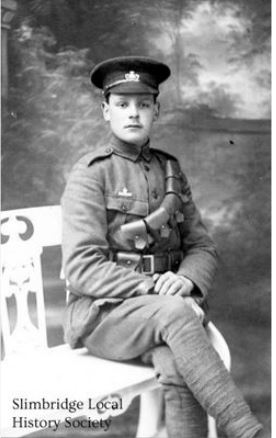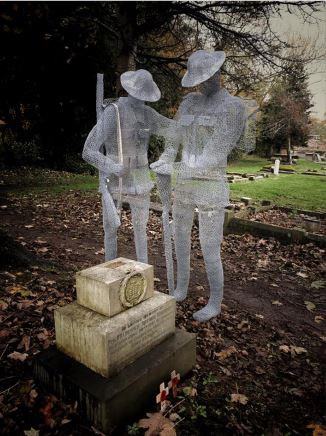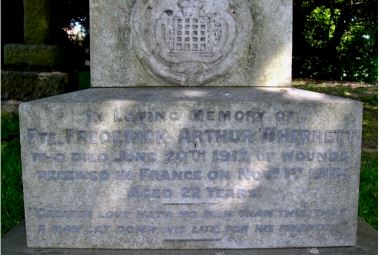2nd Battalion, Worcestershire Regiment

Frederick Arthur Wherrett was born at Hope House Farm, Cambridge, Gloucestershire in 1895, one of thirteen children born to Joseph and Mary Elizabeth Wherrett, who later lived at Street Farm, Cambridge. The Wherretts were an old and well respected local yeoman family. Joseph Wherrett was a farmer (who died in an accident in 1914 – his wife had died in 1897). Frederick was the youngest son.
He originally joined the Gloucestershire Yeomanry, in Gloucester, where he was given the number 2733 but at some point transferred to the 2nd Battalion of the Worcestershire Regiment, where his number was 40200. Unfortunately, his Army Service Record has not survived, so we do not know when he actually enlisted or when the transfer from the Yeomanry to the Worcesters took place: his Medal Rolls Index Card does not give a date for posting abroad.
According to a report in the Cheltenham Chronicle following Frederick’s death he was a ‘popular young farmer’, who died of wounds received on the Somme in November 1916. This newspaper carried his photograph. His headstone states that he was wounded on 1 November and on that date the 2nd Worcesters attacked Boritzka and Hazy Trenches in the vicinity of Lesboeufs
Frederick would have been passed down the casualty line to a Base Hospital on the French coast and from there put on a hospital ship to England. He ended up in the New End Hospital at Hampstead in London, a former workhouse converted into a military hospital. The nature of his wounds is not known but he was receiving treatment until he died, peacefully, of heart failure following an operation on 20 June 1917, age 22. In the days before antibiotics wounds often became infected and difficult to treat, eventually becoming fatal.
His brothers, Will, Percy and Joe all served in the Army, Joe was with the 5th Battalion of the Gloucestershire Regiment in France from 24 May to 18 August 1916 before he injured his ankle ligaments and returned to the UK to join the Royal Defence Corps (similar to the Second World War Home Guard) in September 1917. He was discharged, as being unfit for military service, on 27 November 1917 and died of pulmonary disease in 1920.
Frederick Wherrett was buried, with full military honours, in a family grave in the churchyard of St John the Evangelist, Slimbridge, where a private stone cross marks his grave. His funeral service, with military honours, was conducted by the Rector, Reverend J O H Carter, who lost a son during the war.


Researched by Graham Adams 20 March 2016 (revised)
Some of the above information is taken from Slimbridge Local History Society’s book ‘Slimbridge
Remembers’ published in 2014 to mark the centenary of the Great War.
Photographs courtesy of Slimbridge Local History Society, one showing two Ghost Soldiers standing guard over the grave of Private Wherrett in Slimbridge churchyard.
